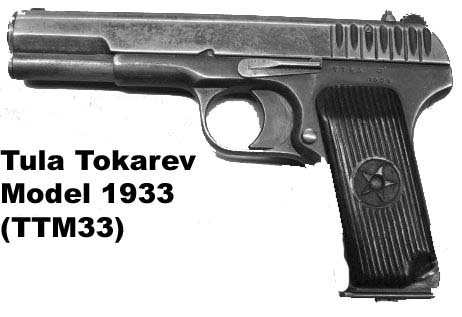Chapter 16: I become a proud owner of a Chinese SMG and a Chinese Pistol
From the very beginning, even before we had joined the Mukti Bahini, I believe every member of Mukti Bahini, particularly those without one, wanted a Chinese SMG as a personal weapon. During 1971, we considered it as the weapon of choice. Therefore, it’s not surprising that I was also yearning after an elusive weapon that seemed to be the exclusive prerogative of the officers and a few other ranks. Moreover, I was becoming disillusioned with the Chinese 7.62 semiautomatic rifle; though the rifle was easy to carry and had reasonable range, yet its major limitation was that it was a semiautomatic.
What we called the Chinese SMG is actually the famousVietnamveteran AK-47 assault rifle; adapted and manufactured by the Chinese. The two letters “AK” comes from Avtomat Kalashnikova and “47” comes from the fact that the rifle was standardized in 1947.
During the Second World War,Germanyhad developed the concept of the assault rifle. This concept was based on the knowledge that most of the military engagements in modern warfare were happening at fairly close range with the majority happening within 100 meters (110 yd). The power and range of contemporary rifle cartridges was simply overly powerful for a vast majority of engagements with small arms. As a result, a cartridge and firearm were sought combining the features of a submachine gun (high-capacity magazine and fully-automatic fire capability) with an intermediate-power cartridge that would be effective to a range of 300 meters (330 yd). For the sake of reduced manufacturing costs, this was done by shortening the 7.92 × 57 mm Mauser cartridge case and substituting a lighter bullet to create the 7.92 x 33 mm Kurz.
The resulting Sturmgewehr 44 (StG44 or MP44), shown on the top, was not the first rifle to use these features; it was preceded by earlier Italian Cei-Rigotti and Russian Fedorov Avtomat designs. The Germans were the first to produce and field a sufficient number of this type to properly evaluate its utility. They fielded the weapon in large numbers against the Russians towards the end of the war and this experience deeply influenced Russian doctrine in the years following the war.
Mikhail Kalashnikov began imagining his weapon while still in the hospital, after being wounded in the battle ofBryansk. He had been informed that a new weapon was required for the 7.62 × 41 mm cartridge developed by Elisarov and Semin in 1943. Sudayev’s PPS43 submachine gun was preferred to Kalashnikov’s design.
Despite circumstantial evidence, Mikhail Kalashnikov denies that his rifle was based on the German assault rifle (compare the two rifles German MP44 and Russian AK47 and observe how closely they resemble each other). It is best described as a hybrid of several previous innovations. To support his position, the AK-47 owes more to the M1 Garand Rifle (shown on the left) than any German design. The double locking lugs, unlocking raceway, and trigger mechanism are clearly derived from the earlier American design. This is not surprising as millions of Garand rifles had operated reliably in combat around the globe. The safety is surprisingly similar to the Browning-designed Remington Model 8 rifle.
The genius in the design of the Kalashnikov rifle is in the simplification of those contributing designs and adaptation to mass production. The AK-47 can be seen as a fusion of the best that the M1 Garand offered combined with the best aspects of the StG44 made by the best processes available in theSoviet Unionat the time.
There were only four Chinese SMGs in our company; Capt. Matin, Selim Bhai and two platoon commanders had them and none wanted to part with these highly prized possessions. My dream to own one was fulfilled when Selim Bhai went for officers training and he had to leave his weapon behind.
Another coveted but scarce weapon was a pistol and like the Chinese SMG, only a few officers had them. As Capt. Matin did not use a pistol, I persuaded and convinced him to get a pistol issued in his name and give that pistol to me. That is how I got a Chinese 7.62 pistol. Unfortunately the armory did not have a holster for the pistol and I had to improvise one by using the mortar pouches. I took a pouch to the tailor at Simna bazaar and he fashioned a holster for the pistol under my close supervision. The holster had a loop to attach it to a belt. In retrospect; however, the pistol was an unnecessary accessory with an effective range of only 50 meters; I never had an opportunity to use it in any combat because the SMG was a much more effective weapon than the pistol.
The so called Chinese Pistol, similar to the Chinese rifle and Chinese SMG, was originally a Russian design. Its original Russian name is Tokarev or more precisely Tula Tokarev Model of 1933 (TTM33). The Chinese manufactured models were chambered for the 7.62X25mm cartridge. It is a short-recoil operated, locked breech pistol. The single action trigger had no safeties, other than a disconnector to prevent out-of-battery fire[1], and a half-cock notch on the hammer. The only safe way to carry it was to always have an empty chamber. The hammer unit was made as a single unit, easily detachable for cleaning and maintenance. Its detachable steel magazine held 8 cartridges. Fixed sights were factory zeroed for 25 meters. Grip panels were usually made of plastic or wood; my pistol had a plastic paneled grip.
[1] When bolt of a firearm doesn’t close all the way before the round is fired is known as out of battery fire. This can happen for many reasons including dirty weapons.



